![]() Modelling Autopoiesis: Harder Than It May Seem!
Modelling Autopoiesis: Harder Than It May Seem!
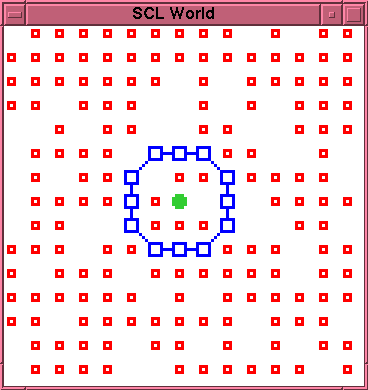
|
The Artificial Cell: Substrate particles (red) can diffuse through the membrane (green), where they react under the influence of the catalyst particle to produce more membrane particles. These are trapped by the membrane and thus build up in concentration, held ready in reserve to effect a repair to the membrane whenever it should rupture. Such repair re-establishes the conditions for the continued maintenance of the cell.
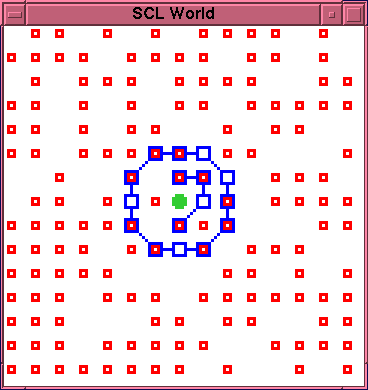
|
Premature Bonding: However, with the model as originally described, the new membrane fragments spontaneously and prematurely bond together, inside the cell. This makes them immobile and thus unavailable to migrate to a rupture site and effect a repair.
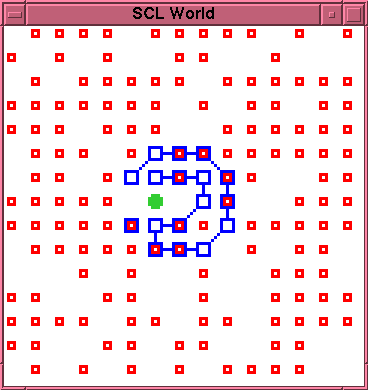
|
Degeneration: When the cell ruptures, instead of a repair, the interior fragment gets incorporated, leaving the catalyst particle free. The conditions for continued metabolism no longer exist: the cell is effectively dead.
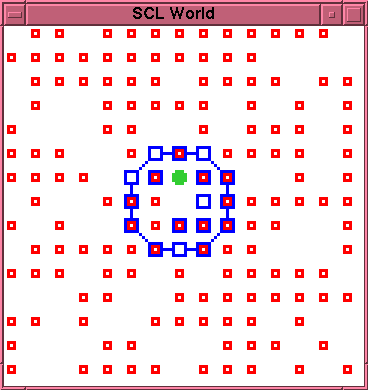
|
Bond Inhibition: The newly rediscovered effect stipulates that free membrane particles may not bond if they are immediately adjacent to already doubly bonded membrane particles. This prevents premature bonding and permits the build up of a reserve of free, mobile, membrane particles.
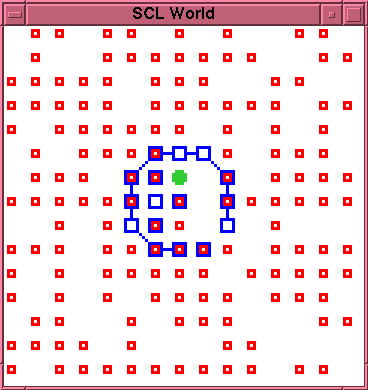
|
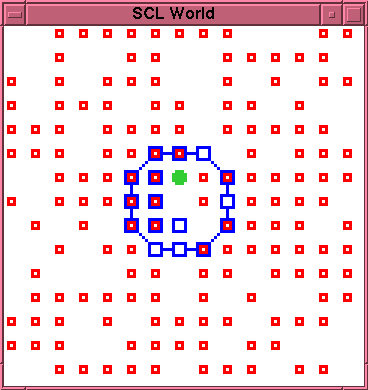
|
Self-Repair: At time 180 the mebrane ruptures; by time 217 a replacement particle drifts into position, and at time 226 the repair is successfully completed.
![]() Modelling Autopoiesis: Harder Than It May Seem!
Modelling Autopoiesis: Harder Than It May Seem!
Copyright © 1997 All Rights Reserved.
Timestamp: 11/3/1997